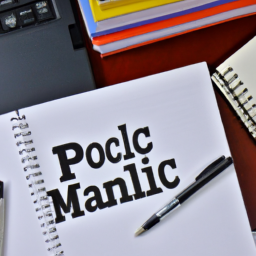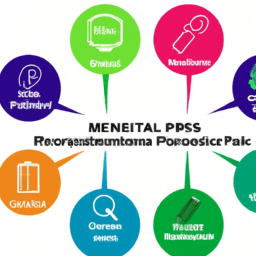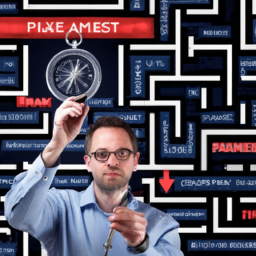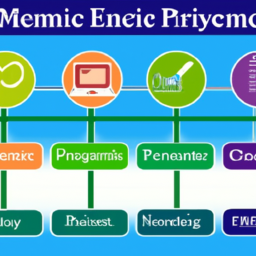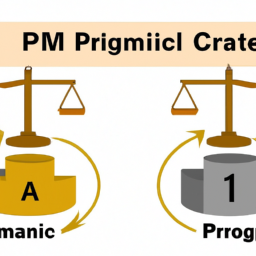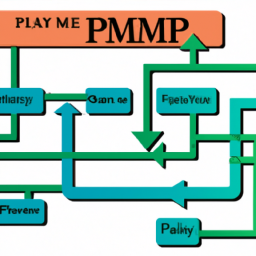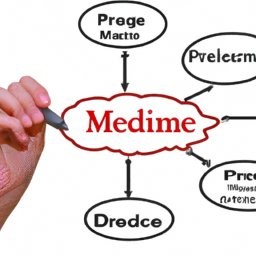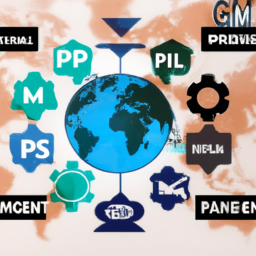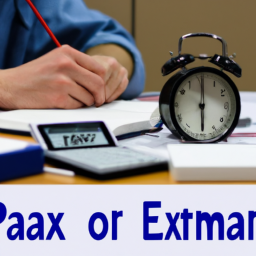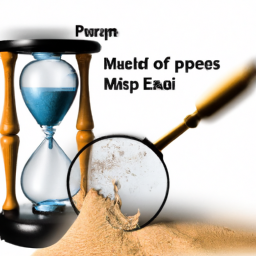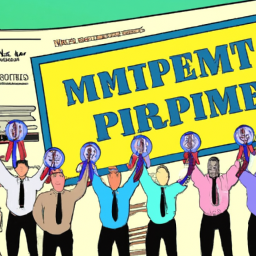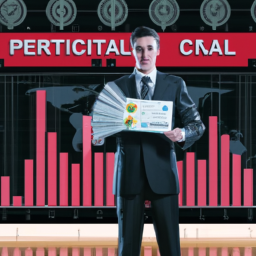PMP Exam Free Practice Questions & Answers
Quiz-summary
0 of 30 questions completed
Questions:
- 1
- 2
- 3
- 4
- 5
- 6
- 7
- 8
- 9
- 10
- 11
- 12
- 13
- 14
- 15
- 16
- 17
- 18
- 19
- 20
- 21
- 22
- 23
- 24
- 25
- 26
- 27
- 28
- 29
- 30
Information
PMP Quiz Bank
You have already completed the quiz before. Hence you can not start it again.
Quiz is loading…
You must sign in or sign up to start the quiz.
You have to finish following quiz, to start this quiz:
Results
0 of 30 questions answered correctly
Your time:
Time has elapsed
You have reached 0 of 0 points, (0)
Categories
- Not categorized 0%
- 1
- 2
- 3
- 4
- 5
- 6
- 7
- 8
- 9
- 10
- 11
- 12
- 13
- 14
- 15
- 16
- 17
- 18
- 19
- 20
- 21
- 22
- 23
- 24
- 25
- 26
- 27
- 28
- 29
- 30
- Answered
- Review
-
Question 1 of 30
1. Question
Which among the following defines a project scope statement?
Correct
The project scope statement is the description of the project scope, major deliverables, assumptions, and constraints. The project scope statement documents the entire scope, including project and product scope. It describes, in detail, the project’s deliverables and the work required to create those deliverables. It also provides a common understanding of the project scope among project stakeholders.
Incorrect
The project scope statement is the description of the project scope, major deliverables, assumptions, and constraints. The project scope statement documents the entire scope, including project and product scope. It describes, in detail, the project’s deliverables and the work required to create those deliverables. It also provides a common understanding of the project scope among project stakeholders.
-
Question 2 of 30
2. Question
You are a project manager and are well aware of the fact that WBS creation is an important aspect of your project. Which among the following is not true for WBS?
Correct
The WBS is a hierarchical decomposition of the total scope of work to be carried out by the project team to accomplish the project objectives and create the required deliverables. Each descending level of the WBS represents an increasingly detailed definition of the project work. The WBS is finalized by assigning each work package to a control account and establishing a unique identifier for that work package from a code of accounts.
Incorrect
The WBS is a hierarchical decomposition of the total scope of work to be carried out by the project team to accomplish the project objectives and create the required deliverables. Each descending level of the WBS represents an increasingly detailed definition of the project work. The WBS is finalized by assigning each work package to a control account and establishing a unique identifier for that work package from a code of accounts.
-
Question 3 of 30
3. Question
You are a business analyst who have been recently asked to help in the scope validation process for a certain project. You have almost finished the task and are about to submit the outputs. Which among the following is not an output of the validate scope process?
Correct
Validate Scope: Outputs
1. Accepted Deliverables
2. Change Requests
3. Work Performance Information
4. Project Documents UpdatesIncorrect
Validate Scope: Outputs
1. Accepted Deliverables
2. Change Requests
3. Work Performance Information
4. Project Documents Updates -
Question 4 of 30
4. Question
You are a project manager in your firm. You have been asked to look over some of the group creativity tasks. Which among the following defines nominal group technique?
Correct
Nominal group technique.
A technique that enhances brainstorming with a voting process used to rank the most useful ideas for further brainstorming or for prioritization.Incorrect
Nominal group technique.
A technique that enhances brainstorming with a voting process used to rank the most useful ideas for further brainstorming or for prioritization. -
Question 5 of 30
5. Question
Which among the following is not a type of group decision-making technique?
Correct
There are various methods of reaching a group decision, such as:
• Unanimity.
• Majority.
• Plurality.
• Dictatorship.Incorrect
There are various methods of reaching a group decision, such as:
• Unanimity.
• Majority.
• Plurality.
• Dictatorship. -
Question 6 of 30
6. Question
One of the technique used in the requirement collection process is the use of questionnaires and surveys. Which among the following describes questionnaires and surveys?
Correct
Questionnaires and surveys are written sets of questions designed to quickly accumulate information from a large number of respondents. Questionnaires and/or surveys are most appropriate with varied audiences, when a quick turnaround is needed, when respondents are geographically dispersed, and where statistical analysis is appropriate.
Incorrect
Questionnaires and surveys are written sets of questions designed to quickly accumulate information from a large number of respondents. Questionnaires and/or surveys are most appropriate with varied audiences, when a quick turnaround is needed, when respondents are geographically dispersed, and where statistical analysis is appropriate.
-
Question 7 of 30
7. Question
Which among the following describes storyboarding?
Correct
Storyboarding is a prototyping technique showing sequence or navigation through a series of images or illustrations. Storyboards are used on a variety of projects in a variety of industries, such as film, advertising, instructional design, and on agile and other software development projects. In software development, storyboards use mock-ups to show navigation paths through webpages, screens, or other user interfaces.
Incorrect
Storyboarding is a prototyping technique showing sequence or navigation through a series of images or illustrations. Storyboards are used on a variety of projects in a variety of industries, such as film, advertising, instructional design, and on agile and other software development projects. In software development, storyboards use mock-ups to show navigation paths through webpages, screens, or other user interfaces.
-
Question 8 of 30
8. Question
You work as a project manager in a firm. You are aware of the various tools and techniques of requirement collection. Which among the following defines context diagrams?
Correct
The context diagram is an example of a scope model. Context diagrams visually depict the product scope by showing a business system (process, equipment, computer system, etc.), and how people and other systems (actors) interact with it. Context diagrams show inputs to the business system, the actor(s) providing the input, the outputs from the business system, and the actor(s) receiving the output.
Incorrect
The context diagram is an example of a scope model. Context diagrams visually depict the product scope by showing a business system (process, equipment, computer system, etc.), and how people and other systems (actors) interact with it. Context diagrams show inputs to the business system, the actor(s) providing the input, the outputs from the business system, and the actor(s) receiving the output.
-
Question 9 of 30
9. Question
Which among the following is not an advantage of requirements traceability matrix?
Correct
The requirements traceability matrix is a grid that links product requirements from their origin to the deliverables that satisfy them. The implementation of a requirements traceability matrix helps ensure that each requirement adds business value by linking it to the business and project objectives. It provides a means to track requirements throughout the project life cycle, helping to ensure that requirements approved in the requirements documentation are delivered at the end of the project. Finally, it provides a structure for managing changes to the product scope.
Incorrect
The requirements traceability matrix is a grid that links product requirements from their origin to the deliverables that satisfy them. The implementation of a requirements traceability matrix helps ensure that each requirement adds business value by linking it to the business and project objectives. It provides a means to track requirements throughout the project life cycle, helping to ensure that requirements approved in the requirements documentation are delivered at the end of the project. Finally, it provides a structure for managing changes to the product scope.
-
Question 10 of 30
10. Question
You are a project manager in your firm and are well aware of the project scope management process. Which among the following defines project scope?
Correct
In the project context, the term scope can refer to:
• Product scope. The features and functions that characterize a product, service, or result; and/or
• Project scope. The work performed to deliver a product, service, or result with the specified features and functions. The term project scope is sometimes viewed as including product scope.Incorrect
In the project context, the term scope can refer to:
• Product scope. The features and functions that characterize a product, service, or result; and/or
• Project scope. The work performed to deliver a product, service, or result with the specified features and functions. The term project scope is sometimes viewed as including product scope. -
Question 11 of 30
11. Question
Which among the following is not included in subsidiary plans?
Correct
Subsidiary plans include, but are not limited to:
• Scope management plan
• Requirements management plan
• Schedule management plan
• Cost management plan
• Quality management plan
• Process improvement plan
• Human resource management plan
• Communications management plan
• Risk management plan
• Procurement management plan
• Stakeholder management planIncorrect
Subsidiary plans include, but are not limited to:
• Scope management plan
• Requirements management plan
• Schedule management plan
• Cost management plan
• Quality management plan
• Process improvement plan
• Human resource management plan
• Communications management plan
• Risk management plan
• Procurement management plan
• Stakeholder management plan -
Question 12 of 30
12. Question
Which among the following is not a measure that a change request might require to be done?
Correct
Requests for a change can be direct or indirect, externally or internally initiated, and can be optional or legally/contractually mandated, and may include:
• Corrective action
• Preventive action
• Defect repair
• UpdatesIncorrect
Requests for a change can be direct or indirect, externally or internally initiated, and can be optional or legally/contractually mandated, and may include:
• Corrective action
• Preventive action
• Defect repair
• Updates -
Question 13 of 30
13. Question
Which among the following defines the monitor and control project work?
Correct
Monitor and Control Project Work is the process of tracking, reviewing, and reporting the progress to meet the performance objectives defined in the project management plan. The key benefit of this process is that it allows stakeholders to understand the current state of the project, the steps taken, and budget, schedule, and scope forecasts.
Incorrect
Monitor and Control Project Work is the process of tracking, reviewing, and reporting the progress to meet the performance objectives defined in the project management plan. The key benefit of this process is that it allows stakeholders to understand the current state of the project, the steps taken, and budget, schedule, and scope forecasts.
-
Question 14 of 30
14. Question
You are a project manager in your firm and your team is currently handling perform integrated change control phase of the project. Which among the following describes configuration status accounting?
Correct
Configuration status accounting.
Information is recorded and reported as to when appropriate data about the configuration item should be provided. This information includes a listing of approved configuration identification, status of proposed changes to the configuration, and the implementation status of approved changes.Incorrect
Configuration status accounting.
Information is recorded and reported as to when appropriate data about the configuration item should be provided. This information includes a listing of approved configuration identification, status of proposed changes to the configuration, and the implementation status of approved changes. -
Question 15 of 30
15. Question
You are a project manager in your firm and your team is currently handling perform integrated change control phase of the project. Which among the following describes configuration verification and audit?
Correct
Configuration verification and audit.
Configuration verification and configuration audits ensure the composition of a project’s configuration items is correct and that corresponding changes are registered, assessed, approved, tracked, and correctly implemented. This ensures the functional requirements defined in the configuration documentation have been met.Incorrect
Configuration verification and audit.
Configuration verification and configuration audits ensure the composition of a project’s configuration items is correct and that corresponding changes are registered, assessed, approved, tracked, and correctly implemented. This ensures the functional requirements defined in the configuration documentation have been met. -
Question 16 of 30
16. Question
You are a project manager in your firm and your team is currently handling the closing phase of the project. Which among the following does not describe your role as a project manager during the close project phase?
Correct
When closing the project, the project manager reviews all prior information from the previous phase closures to ensure that all project work is completed and that the project has met its objectives. Since project scope is measured against the project management plan, the project manager reviews the scope baseline to ensure completion before considering the project closed. The Close Project or Phase process also establishes the procedures to investigate and document the reasons for actions taken if a project is terminated before completion. In order to successfully achieve this, the project manager needs to engage all the proper stakeholders in the process.
Incorrect
When closing the project, the project manager reviews all prior information from the previous phase closures to ensure that all project work is completed and that the project has met its objectives. Since project scope is measured against the project management plan, the project manager reviews the scope baseline to ensure completion before considering the project closed. The Close Project or Phase process also establishes the procedures to investigate and document the reasons for actions taken if a project is terminated before completion. In order to successfully achieve this, the project manager needs to engage all the proper stakeholders in the process.
-
Question 17 of 30
17. Question
You are a project manager in a firm and refer the process develop charter from time to time. Which among the following is not an advantage of process develop charter?
Correct
Develop Project Charter is the process of developing a document that formally authorizes the existence of a project and provides the project manager with the authority to apply organizational resources to project activities. The key benefit of this process is a well-defined project start and project boundaries, creation of a formal record of the project, and a direct way for senior management to formally accept and commit to the project.
Incorrect
Develop Project Charter is the process of developing a document that formally authorizes the existence of a project and provides the project manager with the authority to apply organizational resources to project activities. The key benefit of this process is a well-defined project start and project boundaries, creation of a formal record of the project, and a direct way for senior management to formally accept and commit to the project.
-
Question 18 of 30
18. Question
Which among the following describes business need?
Correct
Business need.
An organization’s business need may be based on a market demand, technological advance, legal requirement, government regulation, or environmental consideration. Typically, the business need and the cost-benefit analysis are contained in the business case to justify the project.Incorrect
Business need.
An organization’s business need may be based on a market demand, technological advance, legal requirement, government regulation, or environmental consideration. Typically, the business need and the cost-benefit analysis are contained in the business case to justify the project. -
Question 19 of 30
19. Question
You are a product analyst in your firm. The main part of your job is to create product scope description for the various products manufactured by your firm. Which among the following is not true for product scope description?
Correct
Product scope description.
The product scope description documents the characteristics of the product, service, or results that the project will be undertaken to create. The description should also document the relationship between the products, services, or results being created and the business need that the project will address.Incorrect
Product scope description.
The product scope description documents the characteristics of the product, service, or results that the project will be undertaken to create. The description should also document the relationship between the products, services, or results being created and the business need that the project will address. -
Question 20 of 30
20. Question
Which among the following is an example of market demand that results in a business case?
Correct
The business case is created as a result of one or more of the following:
• Market demand (e.g., a car company authorizing a project to build more fuel-efficient cars in response to gasoline shortages),
• Organizational need (e.g., due to high overhead costs a company may combine staff functions and streamline processes to reduce costs.),
• Customer request (e.g., an electric utility authorizing a project to build a new substation to serve a new industrial park),
• Technological advance
• Legal requirement (e.g., a paint manufacturer authorizing a project to establish guidelines for handling toxic materials),
• Ecological impacts
• Social needIncorrect
The business case is created as a result of one or more of the following:
• Market demand (e.g., a car company authorizing a project to build more fuel-efficient cars in response to gasoline shortages),
• Organizational need (e.g., due to high overhead costs a company may combine staff functions and streamline processes to reduce costs.),
• Customer request (e.g., an electric utility authorizing a project to build a new substation to serve a new industrial park),
• Technological advance
• Legal requirement (e.g., a paint manufacturer authorizing a project to establish guidelines for handling toxic materials),
• Ecological impacts
• Social need -
Question 21 of 30
21. Question
You are a business analyst in your firm and have been asked to prepare a project management plan. Which among the following defines the develop project management plan process?
Correct
Develop Project Management Plan is the process of defining, preparing, and coordinating all subsidiary plans and integrating them into a comprehensive project management plan. The key benefit of this process is a central document that defines the basis of all project work.
Incorrect
Develop Project Management Plan is the process of defining, preparing, and coordinating all subsidiary plans and integrating them into a comprehensive project management plan. The key benefit of this process is a central document that defines the basis of all project work.
-
Question 22 of 30
22. Question
Which among the following is not a type of project management processes?
Correct
Project management processes are grouped into five categories known as Project Management Process Groups (or Process Groups):
• Initiating Process Group.
• Planning Process Group.
• Executing Process Group.
• Monitoring and Controlling Process Group.
• Closing Process Group.Incorrect
Project management processes are grouped into five categories known as Project Management Process Groups (or Process Groups):
• Initiating Process Group.
• Planning Process Group.
• Executing Process Group.
• Monitoring and Controlling Process Group.
• Closing Process Group. -
Question 23 of 30
23. Question
Which among the following defines the planning process group?
Correct
The Planning Process Group consists of those processes performed to establish the total scope of the effort, define and refine the objectives, and develop the course of action required to attain those objectives. The Planning processes develop the project management plan and the project documents that will be used to carry out the project. The complex nature of project management may require the use of repeated feedback loops for additional analysis. As more project information or characteristics are gathered and understood, additional planning will likely be required. Significant changes occurring throughout the project life cycle trigger a need to revisit one or more of the planning processes and possibly some of the initiating processes.
Incorrect
The Planning Process Group consists of those processes performed to establish the total scope of the effort, define and refine the objectives, and develop the course of action required to attain those objectives. The Planning processes develop the project management plan and the project documents that will be used to carry out the project. The complex nature of project management may require the use of repeated feedback loops for additional analysis. As more project information or characteristics are gathered and understood, additional planning will likely be required. Significant changes occurring throughout the project life cycle trigger a need to revisit one or more of the planning processes and possibly some of the initiating processes.
-
Question 24 of 30
24. Question
You are an information analyst in your firm which manages all the data generated throughout the lifetime of a project. Which among the following is not true for project information?
Correct
Throughout the life cycle of the project, a significant amount of data and information is collected, analyzed, transformed, and distributed in various formats to project team members and other stakeholders. Project data are collected as a result of various Executing processes and are shared within the project team. The collected data are analyzed in context, and aggregated and transformed to become project information during various Controlling
processes. The information may then be communicated verbally or stored and distributed as reports in various formats.Incorrect
Throughout the life cycle of the project, a significant amount of data and information is collected, analyzed, transformed, and distributed in various formats to project team members and other stakeholders. Project data are collected as a result of various Executing processes and are shared within the project team. The collected data are analyzed in context, and aggregated and transformed to become project information during various Controlling
processes. The information may then be communicated verbally or stored and distributed as reports in various formats. -
Question 25 of 30
25. Question
You are an information analyst in your firm. The main part of your job is to remove any type of communicative errors that may arise due to the huge amount of project data generated in the lifetime of the project. Which among the following is true for work performance information?
Correct
Work performance information.
The performance data collected from various controlling processes, analyzed in context and integrated based on relationships across areas. Examples of performance information are status of deliverables, implementation status for change requests, and forecasted estimates to complete.Incorrect
Work performance information.
The performance data collected from various controlling processes, analyzed in context and integrated based on relationships across areas. Examples of performance information are status of deliverables, implementation status for change requests, and forecasted estimates to complete. -
Question 26 of 30
26. Question
You are a consultant by profession. You have been recently contacted by ABC company to provide consultation on one of their profession. This makes you a stakeholder in ABC. Which type of stakeholder are you in ABC?
Correct
Additional stakeholders, such as procurement entities, financial institutions, government regulators, subject matter experts, consultants, and others, may have a financial interest in the project, contribute inputs to the project, or have an interest in the outcome of the project.
Incorrect
Additional stakeholders, such as procurement entities, financial institutions, government regulators, subject matter experts, consultants, and others, may have a financial interest in the project, contribute inputs to the project, or have an interest in the outcome of the project.
-
Question 27 of 30
27. Question
You are a risk analyst in your organization and have the access to the organization’s knowledge base. Which among the following you will not find in risk control procedures?
Correct
Executing, Monitoring and Controlling:
○ Change control procedures
○ Financial controls procedures
○ Issue and defect management procedures
○ Organizational communication requirements
○ Procedures for prioritizing
○ Risk control procedures, including risk categories, risk statement templates, probability and impact definitions, and probability and impact matrix
○ Standardized guidelinesIncorrect
Executing, Monitoring and Controlling:
○ Change control procedures
○ Financial controls procedures
○ Issue and defect management procedures
○ Organizational communication requirements
○ Procedures for prioritizing
○ Risk control procedures, including risk categories, risk statement templates, probability and impact definitions, and probability and impact matrix
○ Standardized guidelines -
Question 28 of 30
28. Question
You are working as a project manager. Your client requires you to release the project in phases so that he can review each phase and may add new features to the project scope. Which project life cycle would you suggest to use in your project?
Correct
Iterative and incremental life cycles are generally preferred when an organization needs to manage changing objectives and scope, to reduce the complexity of a project, or when the partial delivery of a product is beneficial and provides value for one or more stakeholder groups without impact to the final deliverable or set of deliverables. Large and complex projects are frequently executed in an iterative fashion to reduce risk by allowing the team to incorporate feedback and lessons learned between iterations.
Incorrect
Iterative and incremental life cycles are generally preferred when an organization needs to manage changing objectives and scope, to reduce the complexity of a project, or when the partial delivery of a product is beneficial and provides value for one or more stakeholder groups without impact to the final deliverable or set of deliverables. Large and complex projects are frequently executed in an iterative fashion to reduce risk by allowing the team to incorporate feedback and lessons learned between iterations.
-
Question 29 of 30
29. Question
While giving the presentation to a client, you have used the term “Enterprise environmental factors”. The client is not aware of this term and wants clarification. After explaining, the client still seems to be confused and has given you some points describing enterprise environmental factors. Which among the following points does not describe enterprise environmental factors?
Correct
Enterprise environmental factors refer to conditions, not under the control of the project team, that influence, constrain, or direct the project. Enterprise environmental factors are considered inputs to most planning processes, may enhance or constrain project management options, and may have a positive or negative influence on the outcome.
Incorrect
Enterprise environmental factors refer to conditions, not under the control of the project team, that influence, constrain, or direct the project. Enterprise environmental factors are considered inputs to most planning processes, may enhance or constrain project management options, and may have a positive or negative influence on the outcome.
-
Question 30 of 30
30. Question
Which among the following is the function of a directive PMO?
Correct
There are several types of PMO structures in organizations, each varying in the degree of control and influence they have on projects within the organization, such as:
• Supportive. Supportive PMOs provide a consultative role to projects by supplying templates, best practices, training, access to information and lessons learned from other projects. This type of PMO serves as a project repository. The degree of control provided by the PMO is low.
• Controlling. Controlling PMOs provide support and require compliance through various means. Compliance may involve adopting project management frameworks or methodologies, using specific templates, forms and tools, or conformance to governance. The degree of control provided by the PMO is moderate.
• Directive. Directive PMOs take control of the projects by directly managing the projects. The degree of control provided by the PMO is high.Incorrect
There are several types of PMO structures in organizations, each varying in the degree of control and influence they have on projects within the organization, such as:
• Supportive. Supportive PMOs provide a consultative role to projects by supplying templates, best practices, training, access to information and lessons learned from other projects. This type of PMO serves as a project repository. The degree of control provided by the PMO is low.
• Controlling. Controlling PMOs provide support and require compliance through various means. Compliance may involve adopting project management frameworks or methodologies, using specific templates, forms and tools, or conformance to governance. The degree of control provided by the PMO is moderate.
• Directive. Directive PMOs take control of the projects by directly managing the projects. The degree of control provided by the PMO is high.

Success At Your Fingertip
Study anytime and anywhere. Achieve success in your career without stress and pressure. Make study enjoyable again.

